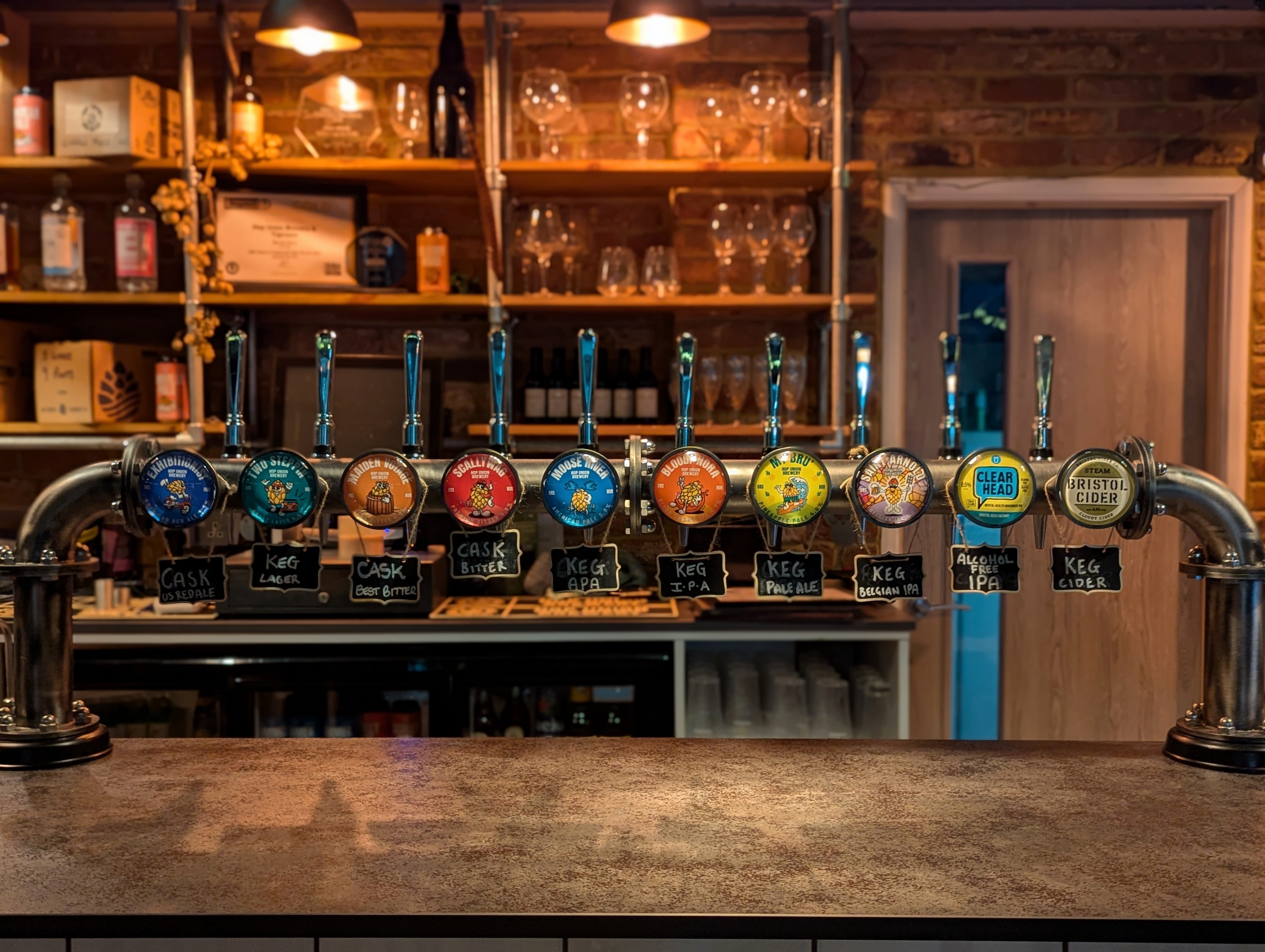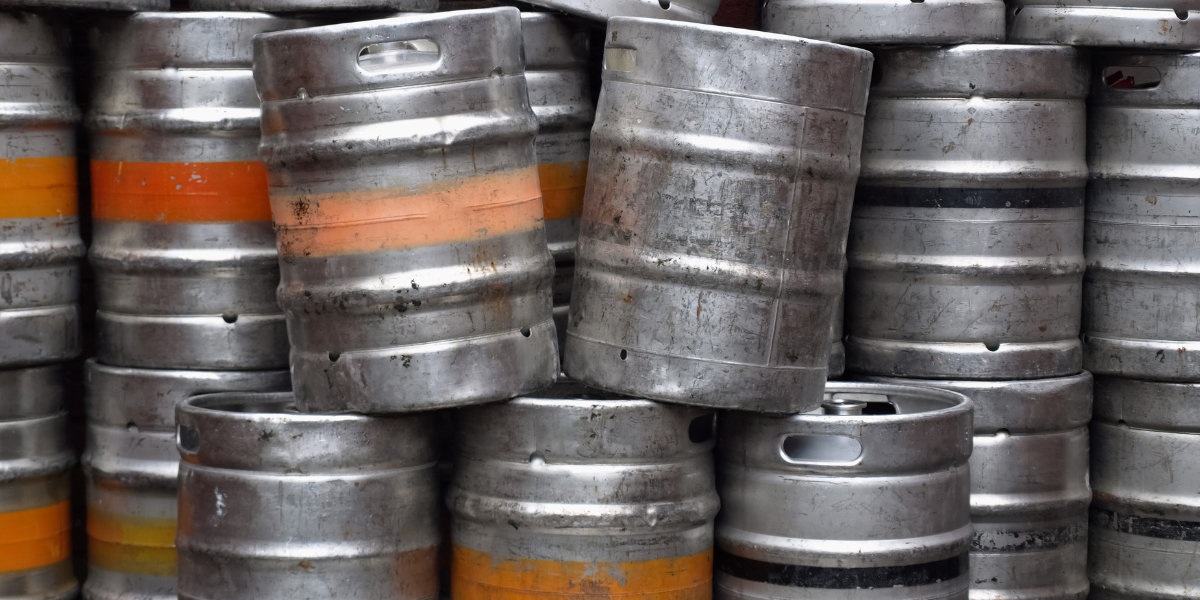Figuring out how many pints to a keg is helpful whether you’re a party planner, a pub owner or simply someone who enjoys a good draught beer. Keg sizes can vary, and so does the answer to the question. From small home-dispensing kegs to large pub barrels, we’re going to look at the numbers, give you some tips for serving beer at its best and more.
Pint Introduction
Before we get into the maths of kegs, it’s worth remembering the different ways to measure pints in the UK. Most commonly, you will see pints described in ml (millilitres). There is 568ml in a UK pint, the same as 20 imperial fluid ounces. If you come from the U.S., it is worth noting that they have a slightly smaller pint (473ml), but we won’t go into the battle between the systems. Suffice to say that whilst the difference in pint size is relatively small, if you’re pouring several pints out of a keg, it quickly adds up!
UK Keg Sizes Explained
In the minds of many, the word keg often evokes the image of a heavy, solid metal barrel. However, kegs can come in a range of shapes and sizes, and some are much smaller than others. The most common keg options you are likely to come across in the UK are the following:
1. 6-litre kegs
- Used for home beer dispensers (PerfectDraft etc).
- Yields around 10.5 pints (6,000ml ÷ 568ml).
- Good for home use, small parties, or sampling new beers.
2. 30-litre kegs
- Used by smaller pubs, events, venues, some craft beer offerings.
- Produces approximately 52.8 pints.
- Good if you want multiple beers on tap, but not large volumes of each.
3. 50-litre kegs
- Standard in UK pubs and bars.
- Gives roughly 88 pints.
- Good for popular beers that move quickly.
4. Traditional casks (9-gallon firkin etc)
- Cask ale is often sold by the gallon, not litre.
- A firkin (9 imperial gallons) is around 72 pints.
- Used for real ale festivals and traditional pub offerings.
Numbers Vary Slightly In Reality
As you can see, the maths here is relatively simple and easy to do in your head, but in practice, the number of pints in a keg can be slightly less than the ideal maths allows. The reasons include:
Foam/head - some beers, notably ales and stouts, are served with more head, reducing the volume of liquid in each pint.
Spillage & line waste - beer left in tap lines or spilled during keg changes.
Temperature affects foaming, so a colder pour may leave you with less beer.
Deciding on Keg Sizes
As to which keg size is “best”, it really depends on what your use-case is:
Home use/party - a 6 litre keg is much easier to store, manage and keep cold.
Smaller events - 30 litre is a nice middle ground, giving you a few options.
Pub functions - 50L kegs mean you don’t need to change kegs as often to keep up with demand.
Keep in mind that once a keg is tapped, freshness is a factor. Kegs stay at peak freshness for 3–5 days without proper cooling and pressurisation systems, or longer with the right setup.
Other Serving Considerations
In order to get the most out of your keg, it isn’t simply a case of picking a size. Serving beer in the right way also matters a lot:
1. Pre-chill kegs
Beer should be served at its optimal temperature (usually 3–8°C for lagers and 10–14°C for ales). Beer that is too warm will foam excessively.
2. Use the correct gas & pressure
Many lager and stout kegs use a CO2/mixed gas system to maintain carbonation in the keg.
Too much pressure and beer pours foamy; too little and it gets flat.
3. Clean beer lines regularly
Beer residue on the line from previous beers affects taste and can increase frothing problems.
In pubs, lines are usually cleaned on a weekly basis (longer if only real ale is served). Home users can generally rinse lines out at the end of each keg.
4. Perfect the pour technique
Beer should be poured at 45° angle, gradually straightened as the glass fills, aiming for a small but consistent head of 1–1.5cm for most beers.
Keg Sizes, In Numbers
For easy reference, here is a list of our most commonly-used keg sizes, the number of pints in each and what they are typically used for:
6-litre keg: 10.5 pints - Home beer dispensers
30-litre keg: 52.8 pints - Small pubs, events, craft options
50-litre keg: 88 pints - Standard pub keg
9 gallon firkin (Traditional Cask): 72 pints - Cask ale
Final Thoughts
In the UK, the range of pints to a keg is quite large, varying from around 10 pints to just under 90. If you are serving your own guests at home or keeping a busy bar ticking over, choosing the right keg is important to match your needs, to ensure your beer is as fresh as possible and to give good value for money.
At Hop Union Brewery, we care about beer too, it’s what we do. We know that great beer is more than just quantity, it’s about the experience in every pint. With the right keg size, storage conditions and pouring technique, you can enjoy every glass as the brewer intended.





